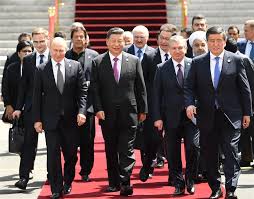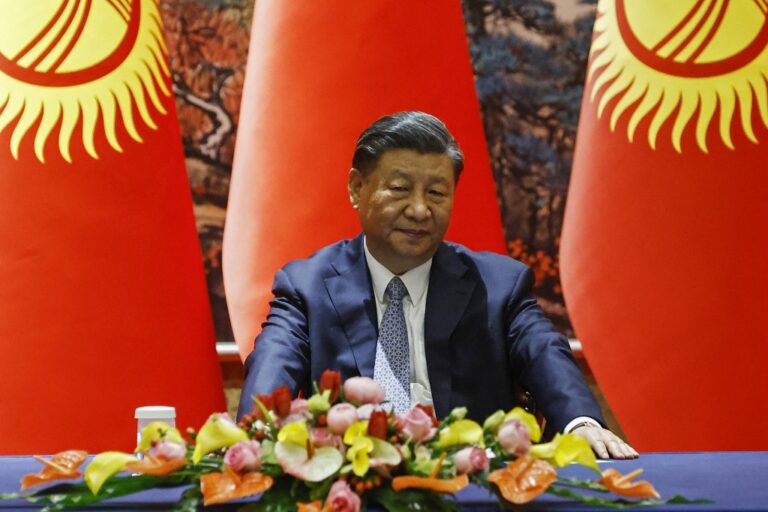The Caspian Sea, situated at the crossroads of Europe and Asia, emerges as a linchpin in the geopolitical landscape of Central Asia. Bounded by Russia, Kazakhstan, Turkmenistan, Iran, and Azerbaijan, this expansive inland body of water holds the distinction of being the largest enclosed sea globally. Its strategic significance extends across various dimensions, encompassing energy resources, transportation networks, and intricate geopolitical dynamics.
A fundamental aspect of the Caspian Sea’s influence lies in its substantial energy reserves. The region hosts some of the world’s largest oil and gas deposits, presenting a viable alternative for China to diversify its energy sources and mitigate its dependence on the volatile Middle East. Simultaneously, the sea serves as a critical transportation corridor, connecting the nations of Central Asia to international markets. The establishment of pipelines and shipping routes facilitates the efficient export of energy resources, significantly amplifying the economic importance of the region.
Countries such as Azerbaijan and Kazakhstan strategically leverage their geographical positions, enhancing their infrastructure to gain geopolitical advantages. The intricate interplay of these nations around the Caspian Sea involves geopolitical tensions and cooperation, primarily revolving around the protracted negotiations among littoral states to delineate maritime boundaries and establish resource-sharing agreements. This ongoing diplomatic process shapes alliances and rivalries in the region, revealing the Caspian Sea as a pivotal arena for geopolitical manoeuvring, encapsulating energy security, economic connectivity, and legal intricacies.
China, attuned to the strategic significance of the Caspian Sea, actively seeks to capitalize on its vast resources and pivotal location. The Belt and Road Initiative (BRI) becomes the driving force behind China’s interest, aspiring to integrate the Caspian region into a transcontinental framework. Substantial investments in infrastructure, including pipelines and ports, not only create new trade routes but also foster economic growth for both China and the region. Beyond the realm of energy, the diverse resources of the Caspian Sea offer prospects for economic diversification, aligning with China’s overarching objectives related to resource security.
China’s engagement in the Caspian region transcends economic interests, extending into the realm of geopolitics. There is a discernible effort to counterbalance Russian dominance by cultivating robust partnerships with key players in the region, such as Kazakhstan, Azerbaijan, and Turkmenistan. However, prudent management is imperative to mitigate potential adverse consequences, including environmental degradation and debt burdens on smaller Caspian states. The prospect of China’s intensified involvement in the Caspian Sea region foretells economic growth but underscores the delicate balance required between development and sustainability. The Caspian Sea becomes a stage where economic promises and geopolitical ambitions interweave, revealing the intricate interplay of interests in this resource-rich corner of the world.

More on this story: China in Central Asia: Russia Driven Out
Transitioning to the realm of Kyrgyzstan, this landlocked nation emerges as a significant player in the broader narrative of Central Asia’s economic resurgence. The notable 15% increase in freight rail traffic signifies a strategic utilization of Kyrgyzstan’s geographical position as a crucial link in expanding multimodal corridors. At the forefront of transformative potential is the proposed China-Uzbek-Kyrgyz railway project, poised to connect China to Uzbek markets via Kyrgyzstan, thereby redefining regional economic dynamics. While challenges, including substantial investment requirements and navigating geopolitical complexities, loom large, strategic partnerships and adept diplomacy are deemed imperative. Kyrgyzstan’s commitment to economic revitalization is underscored by its embrace of multimodal corridors and its forthcoming involvement in the China-Uzbek-Kyrgyz railway project. Despite challenges, the rhythmic rumble of trains across the Kyrgyz plains serves as a testament to a nation poised for progress, navigating challenges with determination and competence.

More on this story: China activates its expansion in Central Asia
In the realm of air connectivity, China and Kyrgyzstan embark on a journey to strengthen ties with the launch of new flight routes. These flights, connecting cities like Bishkek and Xi’an, offer expedited travel, heralding new avenues for tourism and trade. Beyond bilateral connections, the envisioned extension of air routes to Tajikistan hints at a broader network of economic opportunities in Central Asia. For Kyrgyzstan, these air routes represent a lifeline for its tourism industry, tapping into the growing Chinese tourist market. The potential extension to Tajikistan holds the promise of enhanced regional connectivity, fostering economic, political, and cultural ties. The nascent wings of air connectivity, while promising, face challenges such as infrastructure limitations, operational costs, and potential political obstacles. Despite these hurdles, the palpable buzz of activity signifies a step towards a future where Central Asia emerges prominently on the global air travel map.
China’s expansive connectivity initiatives in the Caspian Basin and Central Asia constitute a strategic tapestry woven with geopolitical aspirations, delineated by multifaceted objectives. Enhanced economic interconnectedness translates into political leverage, affording China the capacity to influence policy decisions and realign regional allegiances, thereby reshaping the traditional geopolitical dynamics of the region characterized by the dominance of Russia and Western powers. Moreover, the established network of connectivity projects serves as a conduit for strategic expansion, positioning China to extend its influence beyond Central Asia into Eurasia, potentially reaching European and Middle Eastern markets.
However, this ambitious web of connectivity is not without challenges; environmental considerations, concerns about mounting debt, and the potential for resource exploitation necessitate meticulous attention. Navigating the intricate geopolitical landscape while mitigating the risk of fuelling regional rivalries emerges as a critical imperative for China to realize its ambitions without unsettling the stability of the region. In essence, China’s connectivity endeavours in the Caspian Basin and Central Asia offer a glimpse into its comprehensive Eurasian strategy, contingent upon a delicate equilibrium between economic, political, and environmental exigencies.The Caspian Sea and the nations within its sphere of influence stand at the crossroads of geopolitical, economic, and infrastructural transformations. China’s strategic interests in the Caspian region, as epitomized by the Belt and Road Initiative, align with its broader global initiatives. Simultaneously, Kyrgyzstan navigates a path of economic resurgence through multimodal corridors and ambitious railway projects. The evolving air connectivity, linking China, Kyrgyzstan, and potentially Tajikistan, symbolizes a concerted effort to weave a tighter network of economic opportunities in the region. The interplay of these dynamics underscores the complex and interconnected nature of geopolitical and economic shifts in Central Asia, shaping the future trajectory of nations in this strategically pivotal part of the world.




